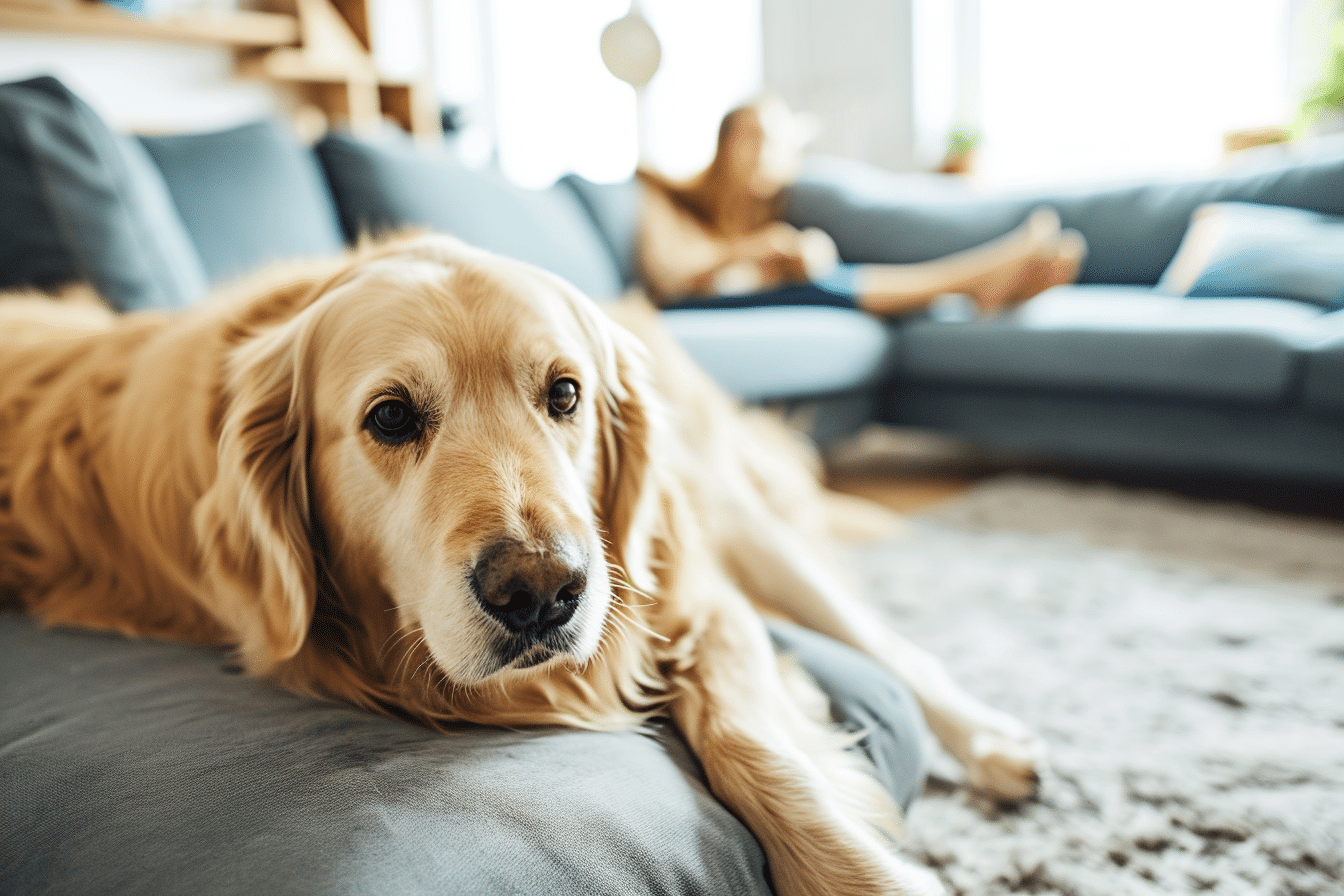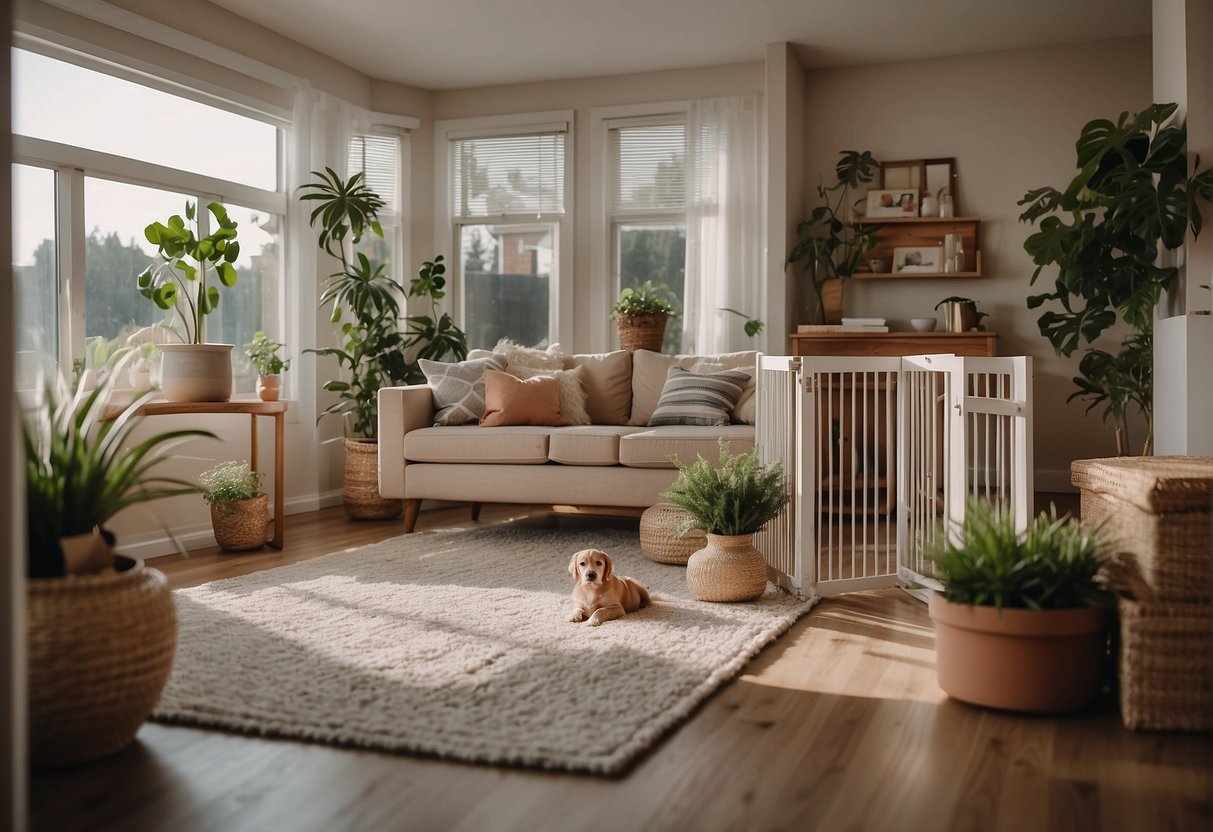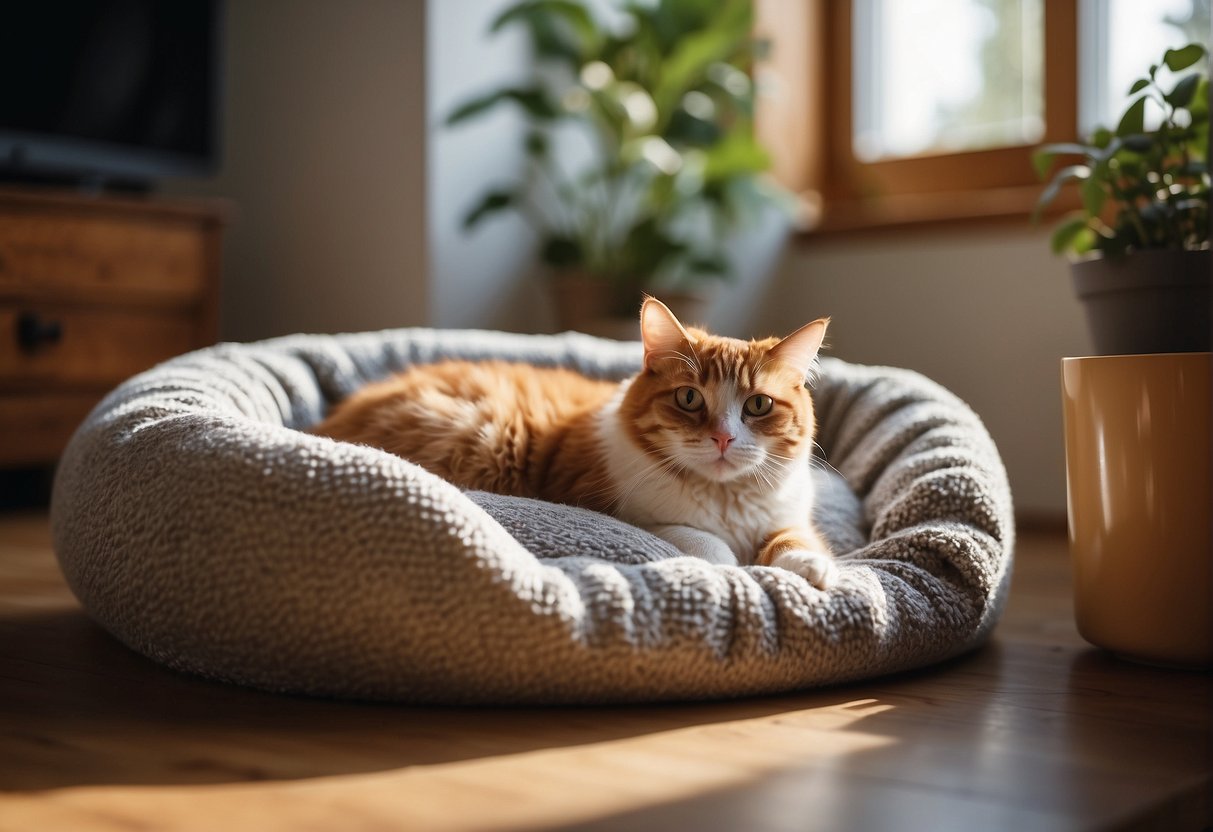
Pet-Friendly Home Tips: Easy Ways to Make Your Space Cozy for Fur Babies
As a pet owner, it’s important to create a home environment that is both welcoming and safe for your furry friends. When thinking of pet-friendly home tips in the living space, keep in mind the needs of your pets, the ease of cleaning, and the overall durability of materials used. By incorporating thoughtful design elements and integrating safety measures, you’ll be able to provide a comfortable and secure home for your pets to thrive in.
Designing with durability and ease of cleaning in mind will benefit both you and your pets in the long run. Stain-resistant fabrics, washable surfaces, and easily accessible spaces to clean will make maintaining a pet-friendly home significantly easier, while your pets will enjoy the added benefit of a clean, comfortable environment.
Pet safety measures are crucial in a pet-friendly home. Childproof locks can be used to keep your pets out of off-limits rooms or cabinets containing dangerous substances. Secure fencing around your outdoor spaces will help ensure your pets don’t venture off your property, while non-slip surfaces can help to prevent accidental slips and falls.
Key Takeaways from Pet-Friendly Home Tips
- Prioritize your pets’ needs when designing a pet-friendly living space.
- Focus on durability and ease of cleaning to maintain a comfortable environment.
- Implement pet safety measures to keep them secure indoors and outdoors.
Creating a Pet-Friendly Living Space
Designing a pet-friendly living space is essential for homeowners with cats and dogs. A well-thought-out interior can help to accommodate the pets’ needs while maintaining a comfortable and stylish home.
Choosing the Right Flooring
When planning a pet-friendly house, selecting the appropriate flooring is vital. It would be best to consider materials that are durable, easy to clean, and slip-resistant. Hard surfaces like tile and sealed hardwood are ideal choices as they are scratch-resistant and can be easily wiped clean. Alternatively, waterproof laminate or luxury vinyl tile can also provide a budget-friendly option with similar benefits. Remember to avoid carpets as they can quickly become a breeding ground for pet hair, odor, and stains.
Furniture and Fabric Selection
Pets tend to leave their mark on furniture, so choosing materials that are easy to clean and durable is essential. Opt for pieces made of tightly-woven, stain-resistant fabric, such as microfiber, canvas, or leather. When selecting colors, consider patterns or hues that can camouflage pet hair and minimize the appearance of wear and tear. Keep delicate or heirloom furniture to a minimum to reduce the risk of damage from pets, and prioritize furniture with sturdy frames and long-lasting construction.
Window treatments also play a role in pet-friendly home decor. Choose cordless blinds or curtains made of heavy-duty fabric that can withstand the occasional clawing from pets. You can also use drapes that are easy to wash and maintain to ensure your windows keep their aesthetic appeal.
Space Planning for Pet Areas
Creating specific areas for pets to sleep, eat, and play can support a well-organized pet-friendly home. Designate spaces for pet beds, feeding stations, and storage for toys and supplies. Ensure that these areas are easily accessible for pets while maintaining a clear path for people to navigate around them.
Incorporate zones for your pet’s entertainment, such as cat trees and dog-friendly play areas, keeping them near windows for natural lighting and outdoor views. Integrating pet areas into the overall interior design harmonizes your space, catering to both pets and humans alike.
While creating a pet-friendly living space requires thought and effort, it is essential to consider your pets’ personalities and needs. With the right choices in flooring, furniture, and space planning, you can establish a stylish and functional home for you and your furry friends.
Designing for Durability and Ease of Cleaning
Creating a pet-friendly home involves considering the materials used and incorporating efficient cleaning solutions. This makes it easy to maintain a clean and comfortable environment for both you and your furry friends.
Materials for Pet Homes
When choosing materials for your pet-friendly home, opt for durable and easy-to-clean options. For flooring, tile and hardwood are great choices as they can handle scratches and accidents better than carpets. If you prefer to have carpets or rugs, select ones made from materials that are stain-resistant, like polypropylene.
For furniture, consider upholstery made with pet-friendly materials that resist hair, dirt, and odors. Leather and microfiber are two popular options, as they can be wiped clean and don’t trap hair like other fabrics.
Recommended materials for pet-friendly homes:
- Flooring: Tile, Hardwood
- Carpet/Rugs: Stain-resistant materials (e.g. polypropylene)
- Furniture: Leather, Microfiber
Efficient Cleaning Solutions
Pets can bring in dirt, hair, and stains, but with the right cleaning tools, keeping your home clean becomes a breeze. Invest in a high-quality vacuum designed to handle pet hair and dirt, and make sure to use it regularly.
Keep cleaning supplies like pet-friendly stain and odor removers on hand for quick and easy cleanup of accidents. For hardwood flooring, use cleaning products specific to that material to avoid causing damage during the cleaning process.
Efficient cleaning solutions:
- Vacuum: High-quality, designed for pet hair and dirt
- Cleaning supplies: Pet-friendly stain and odor removers, hardwood-specific products
Remember to regularly clean your pet’s belongings, like their bed and toys, to ensure they stay fresh and prevent the buildup of dirt and odors in your home.
Pet Safety Measures

Preventing Indoor Hazards
When designing a pet-friendly home, it is essential to consider safety measures to protect your furry friends. Begin by identifying and removing toxic plants such as lilies from your home. Many common household plants can be harmful to pets if ingested. A comprehensive list of toxic plants can be found at How to Make Your Home Pet Friendly.
Additionally, it’s crucial to secure all electrical cords and store cleaning products, chemicals, medication, pesticides, and fertilizers out of your pet’s reach. It’s always better to keep such toxic substances in locked cabinets or high shelves.
Safe Outdoor Environments
Creating a safe outdoor environment for your pets involves proper training, leash use, and appropriate fencing. Train your pets to respect boundaries and always keep them on a leash when exploring unfamiliar areas. A secure fence is vital to prevent your pets from wandering off or encountering potential hazards.
Moreover, choose pet-safe materials like stones when designing your outdoor landscape to avoid unintentional harm. Regularly inspect your outdoor area for any potential hazards, such as sharp objects, and remove them promptly.
By following these simple guidelines, you’ll create a secure and comfortable home for your cherished pets.
The Comforts of Home for Your Pet

When designing a pet-friendly home, it’s important to consider the needs and preferences of your furry friend. This section will discuss two key aspects: sleep and relaxation areas, and feeding and hydration stations.
Sleep and Relaxation
Creating a comfortable space for your pet to sleep and relax is essential. Consider the following tips for setting up the perfect spot:
- Choose the right bed: Pick a bed suitable for your pet’s size, age, and preferences, such as orthopedic beds for older pets or cushioned mats for pets that like to stretch out.
- Location: Place the bed in a quiet, low-traffic area where your pet will feel safe and be able to rest undisturbed.
- Blankets and toys: Add a favorite blanket or toy to the bed for additional comfort and familiarity.
Feeding and Hydration Stations
The next step is to create efficient and hygienic feeding and watering stations for your pets. The following table provides a quick overview of the essential elements to include:
| Element | Function | Tips |
|---|---|---|
| Food bowl | Place for pets to eat | Choose a durable, easy-to-clean material like stainless steel or ceramic |
| Water bowl | Place for pets to drink | Ensure the bowl is large enough and always filled with fresh water |
| Placement | Proper location for bowls | Keep bowls away from high-traffic areas and sources of dirt or dust |
| Floor mat | Protect your floors | Place a mat or tray under the bowls to catch spills and make cleaning easier |
By addressing these aspects, you’ll create a welcoming environment, promote healthy habits, and ultimately improve the quality of life for your pet.
Luxury Specialist at McGraw Realtors
With a diverse background, including a career as an Air Force fighter pilot and entrepreneurship, Bill transitioned to real estate in 1995. Co-founding Paradigm Realty with his wife, Charlene, he quickly rose to prominence in Oklahoma City’s luxury real estate scene. Now, as one of the top agents with annual sales surpassing $20 million, Bill’s dedication to exceptional service remains unparalleled. With a legacy spanning over two decades in the industry, Bill’s expertise and commitment make him a trusted name in luxury real estate.